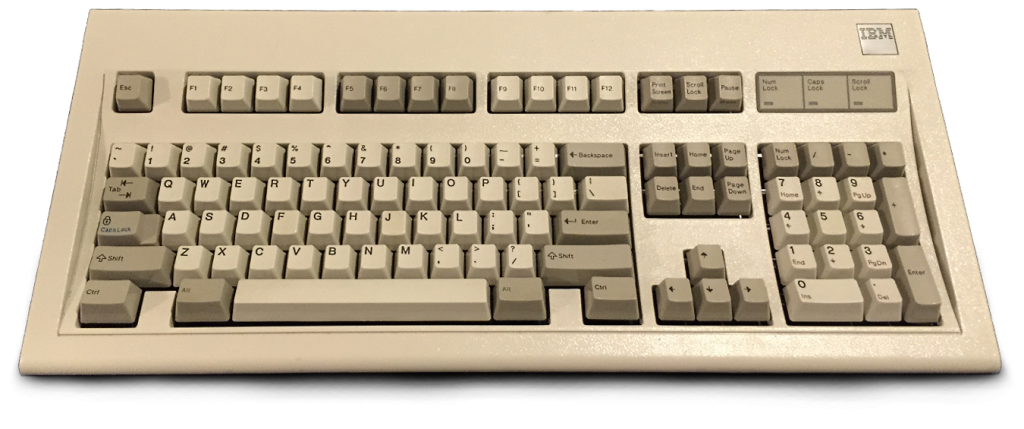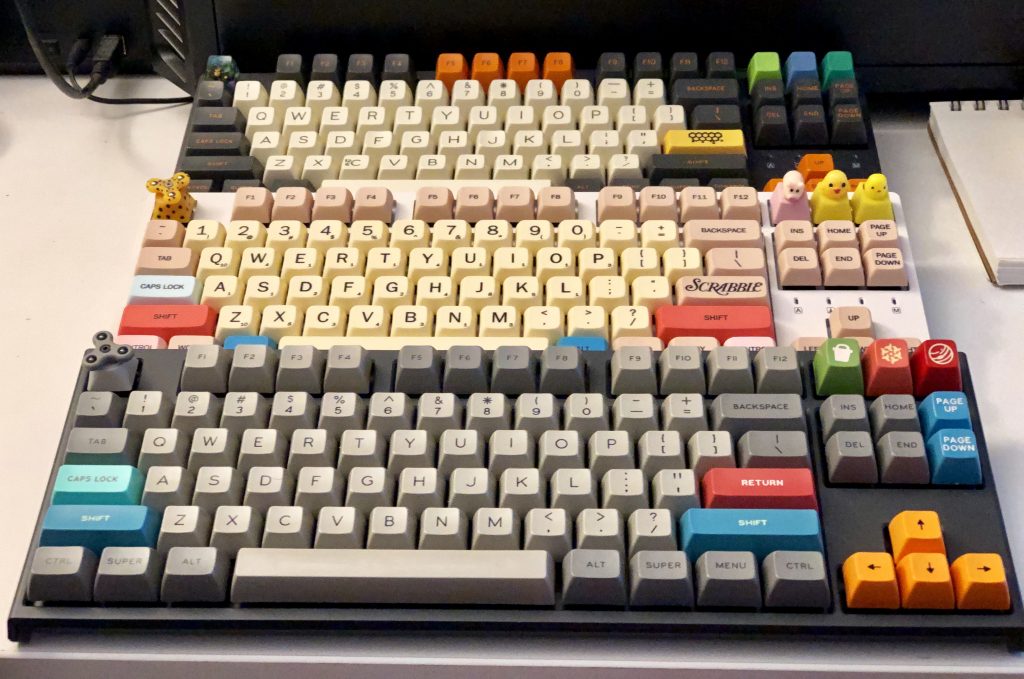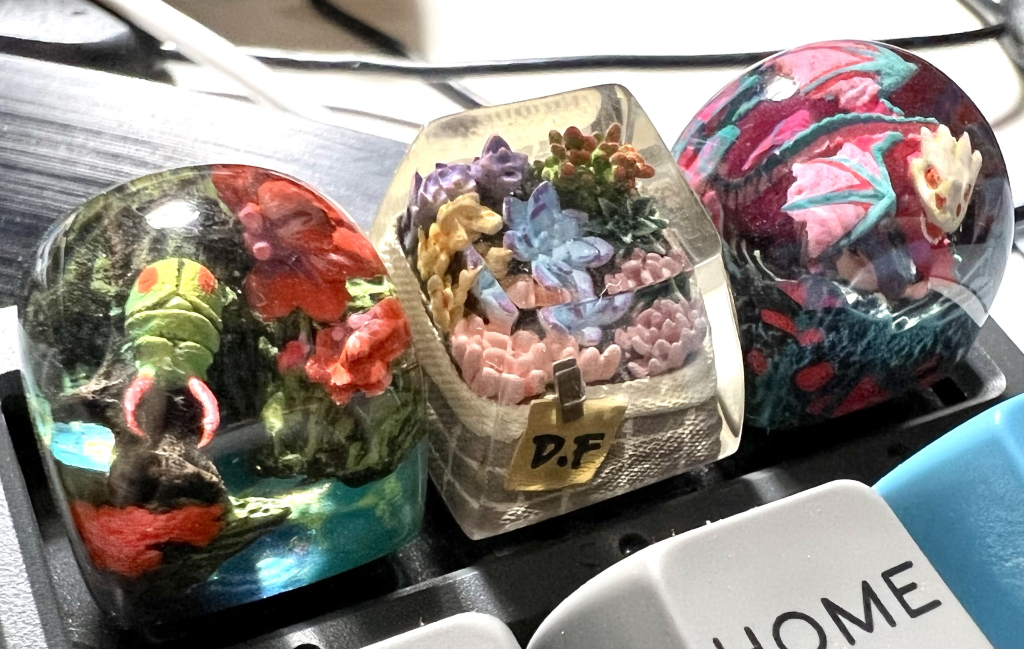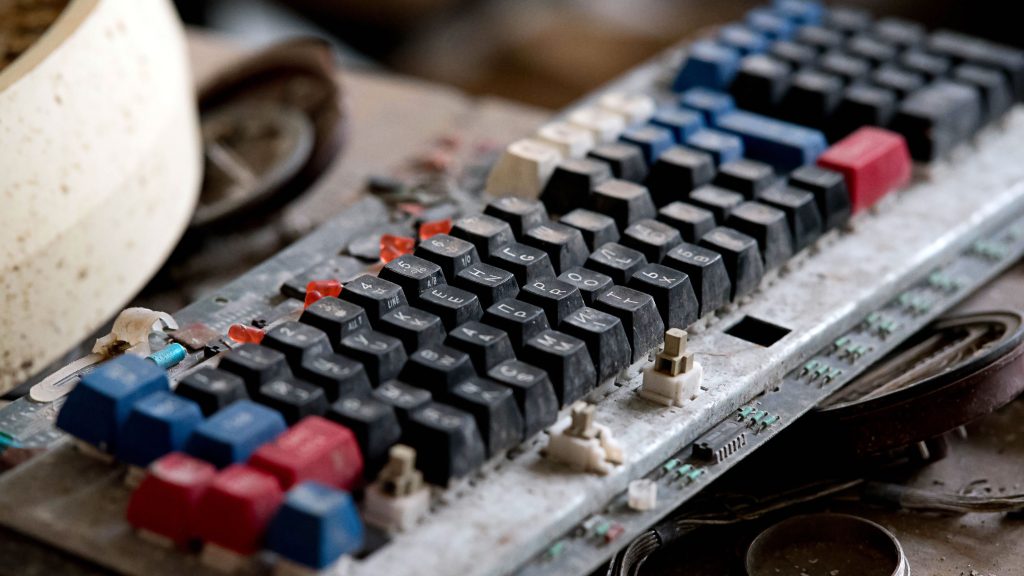Computer keyboards. Wait – aren’t they all “mechanical”? Well, sure they are, but there’s a special term that’s become prevalent in recent years to describe a particular type of keyboard sporting several factors that significantly distinguish them from the commonplace keeb sold for a buck or two at your local Goodwill, or that ships with a Dell computer, or even that is incorporated into your laptop.
Decades ago, business computer equipment like IBM was accompanied by big, heavy keyboards that sounded clacky as hell when you typed on them. The IBM 3270, and years later the Model M, were classics from the seventies through the eighties that were solid, dependable, professional-looking and loud as blazes. Model M’s had what was known as a “buckling spring” mechanism and removable (thus washable/easily cleanable) keycaps, but were a bit on the expensive side for what they did. Throughout the nineties, these keyboards started to be outdated in favour of the cheaper, lighter and far quieter “rubber dome” keyboards that most computer users are familiar with today. Just like those giant CRT computer monitors were replaced by the thin LCD panels we now use.

Sometime in the 2000s, I was at work typing on one of these keyboards, like millions of other people, and found myself thinking back to the late 80’s when I first entered the workforce and did data entry on the keyboards of the day. I learned that what I was remembering is something referred to as a mechanical keyboard – instead of rubber domes absorbing impact softly, each keypress in an MK activates a special switch mechanism providing a degree of audible and tactile feedback. Mechanical switches are the truly special factor in these devices – not only is there a gentle, pleasing “snick” feeling transmitted up through your fingers as you type, but each type of switch (there are MANY variations) also has its own “actuation force”, in other words how hard you must press the key before it travels downward, and how far it travels before it “actuates”. Long story short, after some research I went hunting for such a keyboard again and wound up purchasing the first in my now quite extensive collection of mech keyboards. Using it was life changing. No exaggeration.
The factors associated with mechanical keyboard switches contribute enormously to the satisfaction of using such a keyboard. Beyond the generic “linear” and “tactile” switch type, there are dozens and dozens of variations associated with volume, tactility, actuation force and travel distance. These switches are incorporated into a huge number of commercial keyboards now, costing anywhere from ~$20 through to many hundreds of dollars. Upon these switches, interchangeable keycaps are installed and these too have many variants – the keycap height, “sculpting”, colors, top textures and more are different from set to set, and you can even buy special keycap sets (sometimes for hundreds of dollars) that look and feel immensely pleasing.

“Who cares?” you might ask. You use a keyboard, then you’re done for the day and it’s time to watch TV or do chores or have fun outdoors or whatever other non-computer things you may wish to do outside of your job. If that’s you, I envy you in a way. Because as a career computer person, I spend many, many hours a day on my various computers and to me the quality of the equipment very much matters. When I went mattress-shopping many years ago, the salesman told me something that has resonated with me ever since: You spend a third of your life in bed, so you should never skimp on a good boxspring and mattress. Absolutely so. If you commute for hours to/from work you shouldn’t skimp on a comfortable car or bicycle either. Similarly, if you type all day you should never skimp on the things that facilitate that activity – your chair, your monitor, your keyboard. Each one of which, positioned or used wrongly, can contribute to potentially permanent health complications. Food for thought.
So then. There exist niche computer keyboards called “mechanical keyboards”. They have special switches that, while slightly to significantly louder than a “regular” keyboard, provide a degree of feedback during your typing that enhances the data entry experience. These keyboards are customizable with colorful keycaps. Know also that the keyboard “bases” themselves are of many shapes, sizes and colors, ranging from the full experience with the numberpad on the right through to weird and wonderful ergonomic or ortholinear devices that can fit in a jacket pocket. Because of the interchangeable nature of the keycaps, an even more niche market has arisen for what are known as “artisan” keycaps, which don’t have letters or numbers on them at all but can be of any small shape. I have three or four functional miniature fidget spinner keycaps, which I use on my ESC keys. There are lots of different artisan types – tiny insects encapsulated in resin, gardenscapes, koi fish and much more – each a tiny work of art resting at your fingertips.

Having a window seat at work that affords you a nice view is something that can improve your outlook for the day and make your job just that little bit more enjoyable. A nice photo on your desk, or painting on the wall, provides the same kind of pleasure. While it might sound odd, I can assure you that some mechanical keyboards provide a similar uplifting effect. There is an delight gained from using these devices that must be experienced to be understood. I once said to someone that using a mechanical versus a cheap commonplace keyboard is like the difference between AM and FM radio. We never knew what we were missing until that day we heard FM for the first time. Or played a compact disc and learned that we could instantly change tracks without physically rewinding them.
If you’re eager to learn more, here are some google terms for you: “mechanical keyboard”. “artisan keycap”. “dwarf factory”. “signature plastics”. “sa keycaps”. “ortholinear”. If none of this fires up an appetite within you, I raise my coffee mug to you. Were I like you, I’d be thousands of dollars richer now.
Then again, maybe that money would have just gone into another niche interest instead. Keebs ain’t my only one. 🙂


